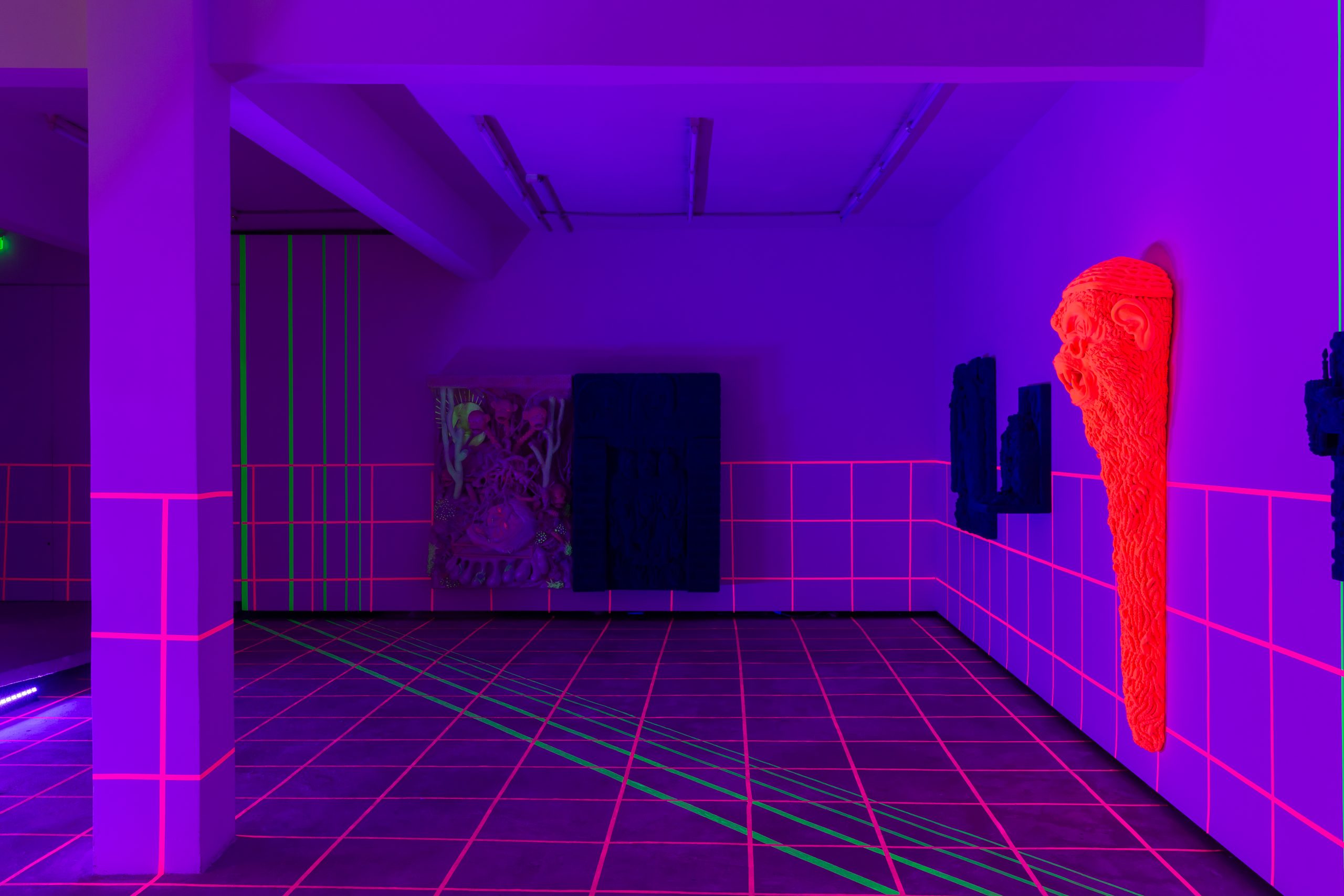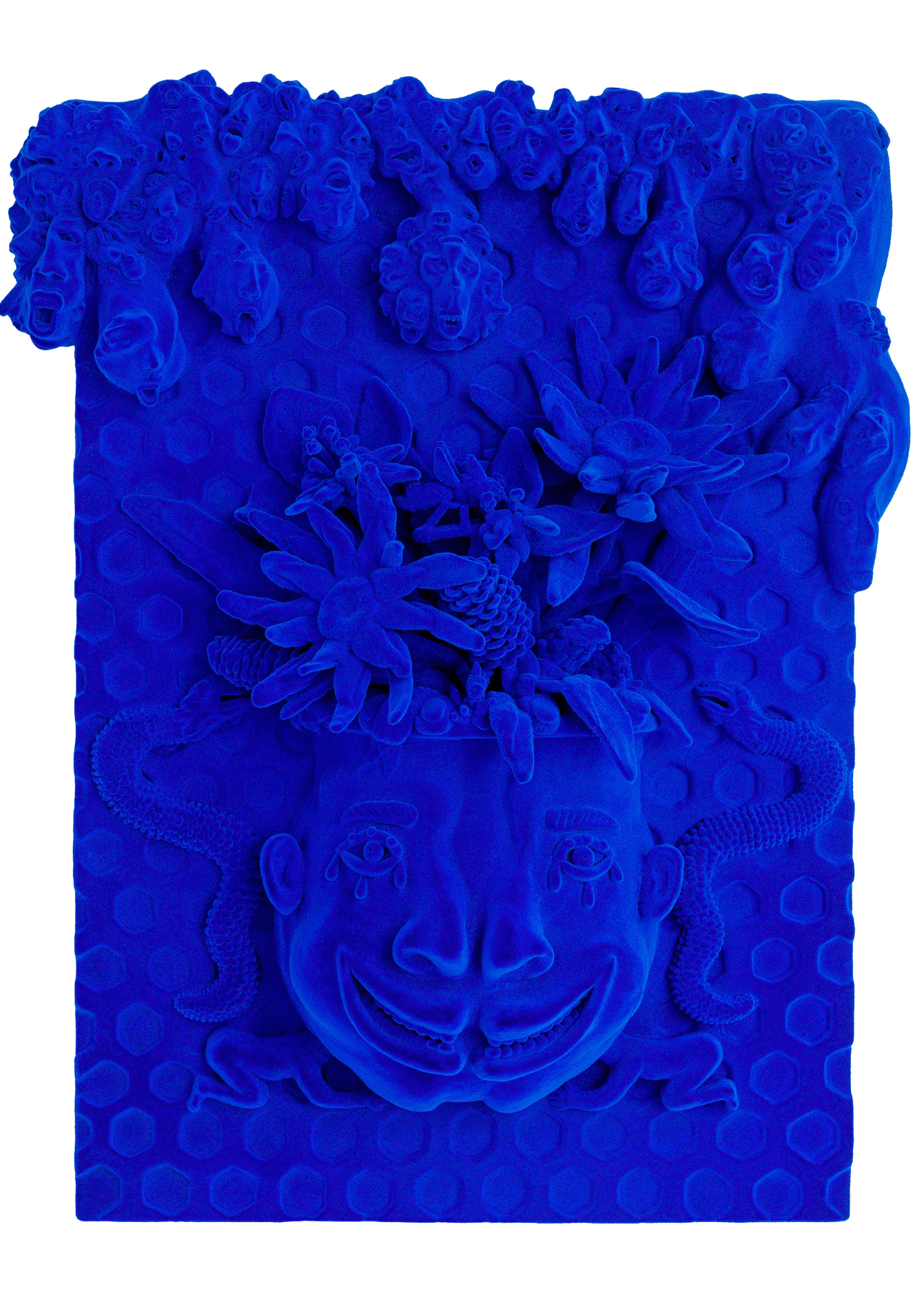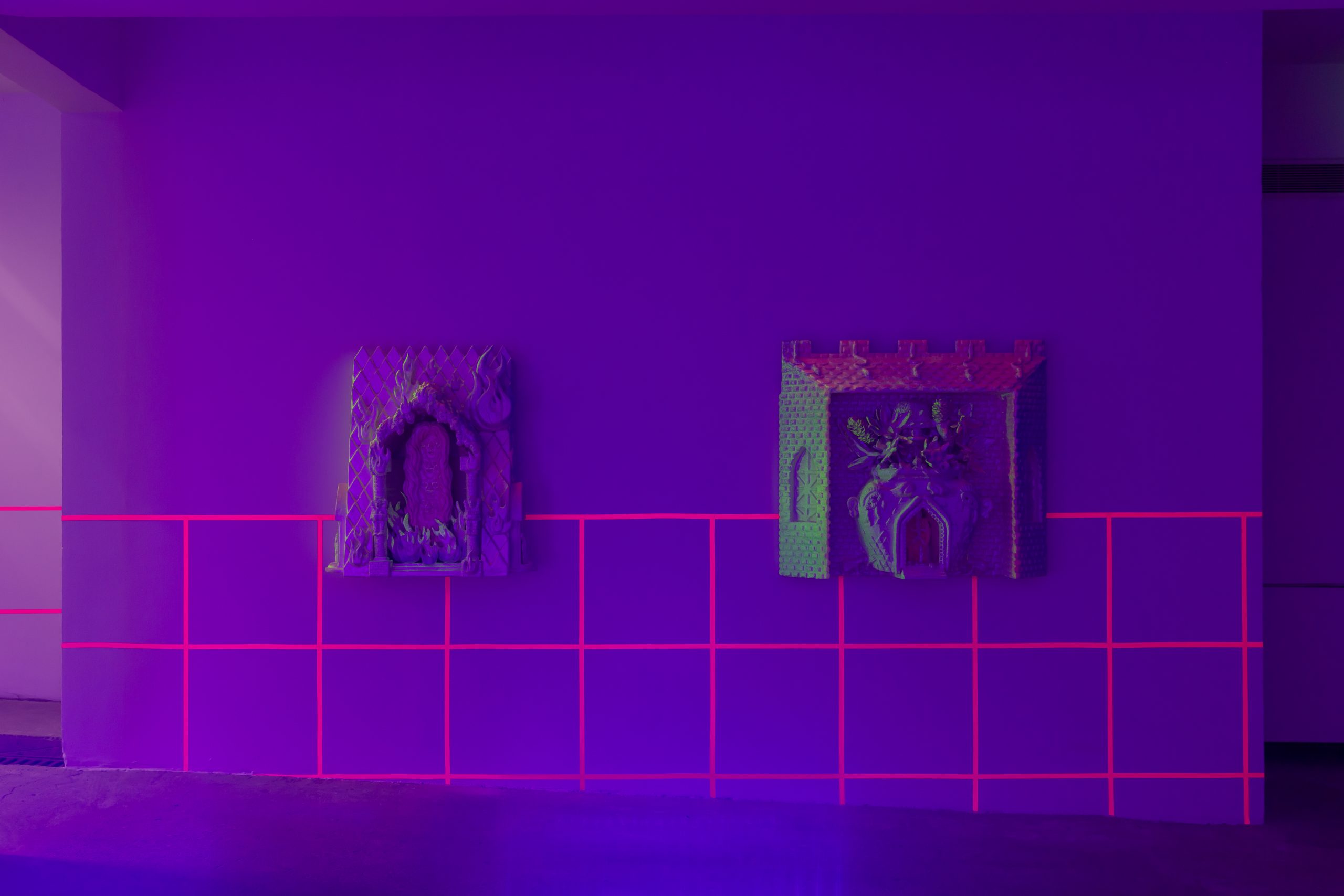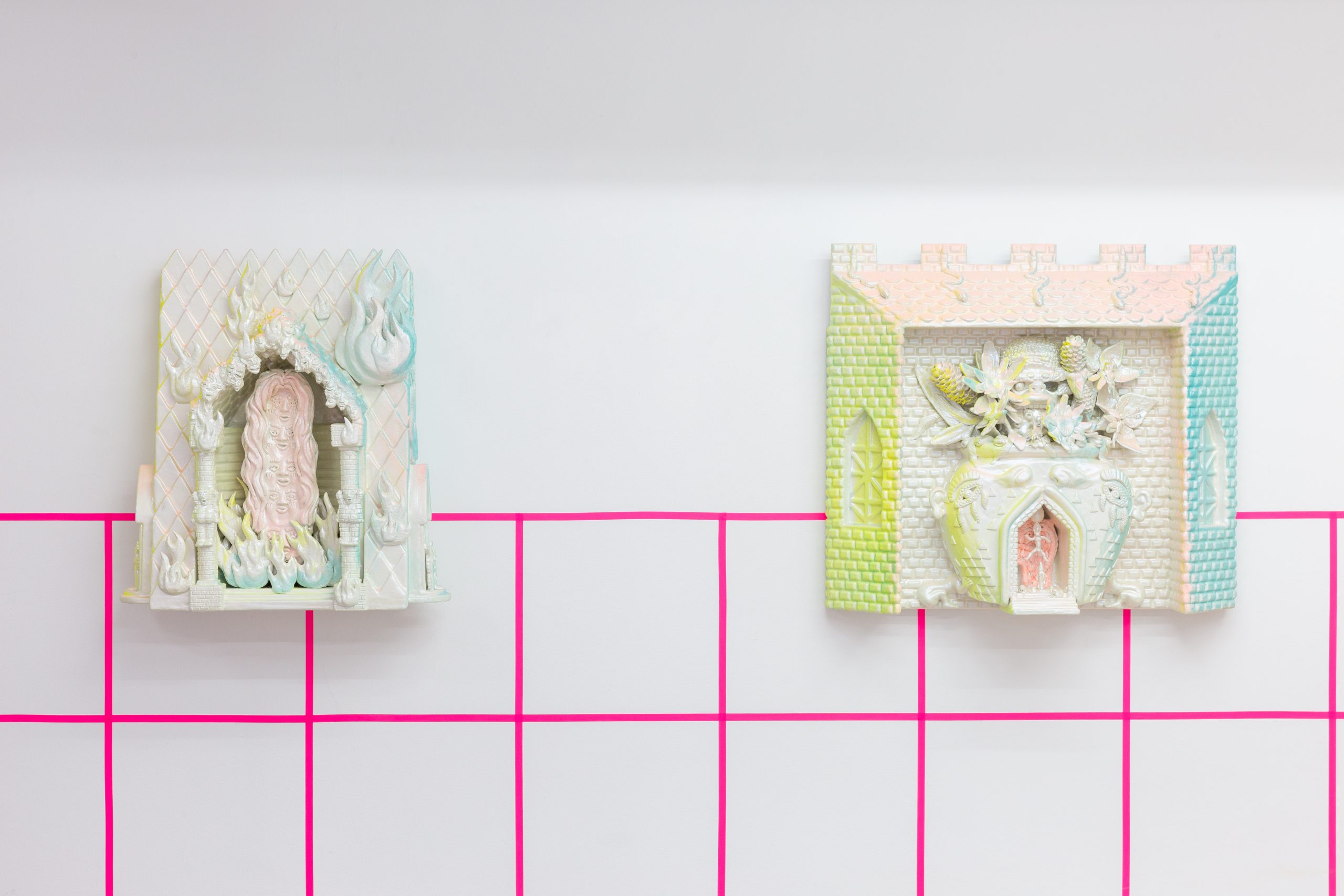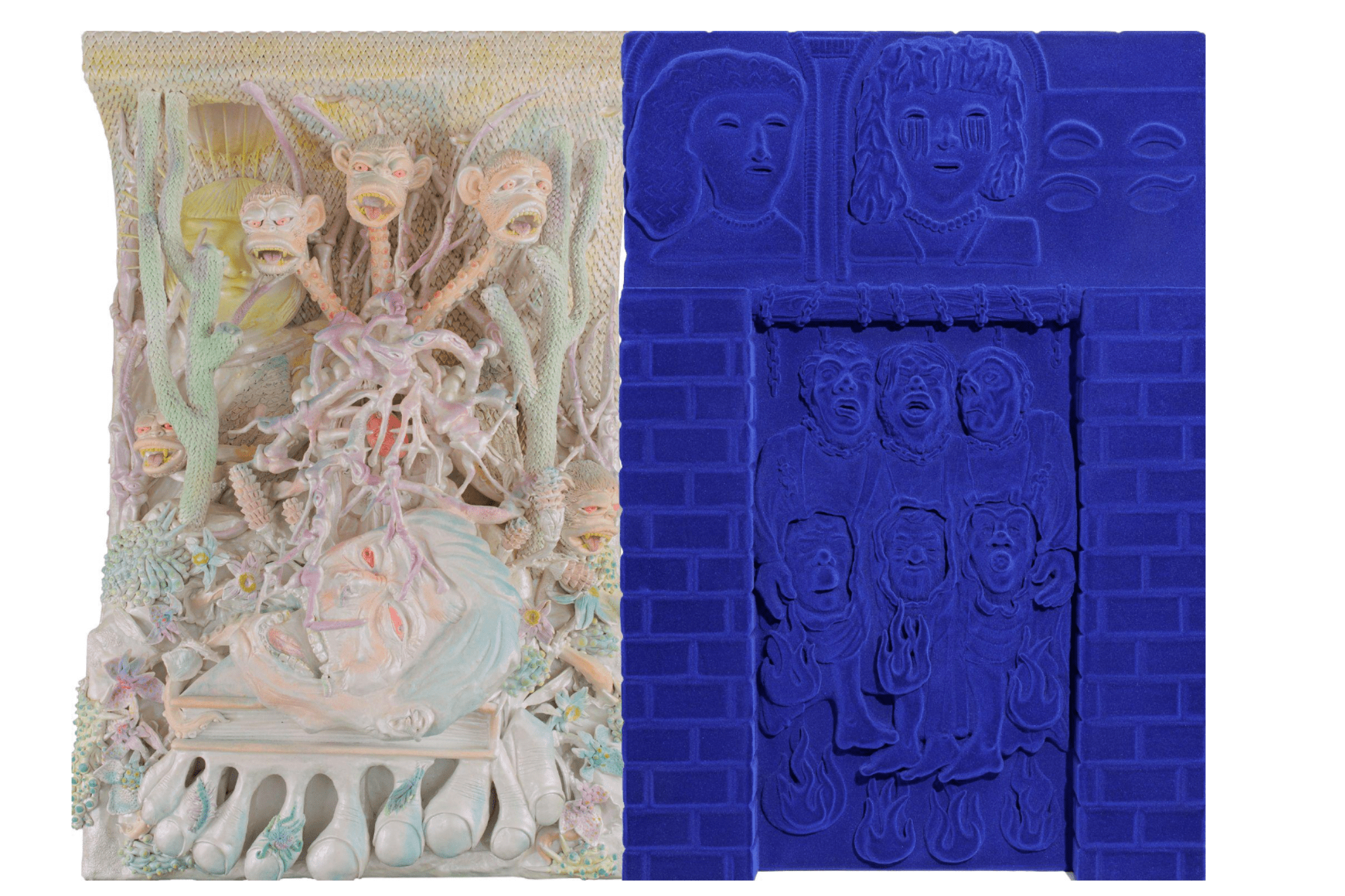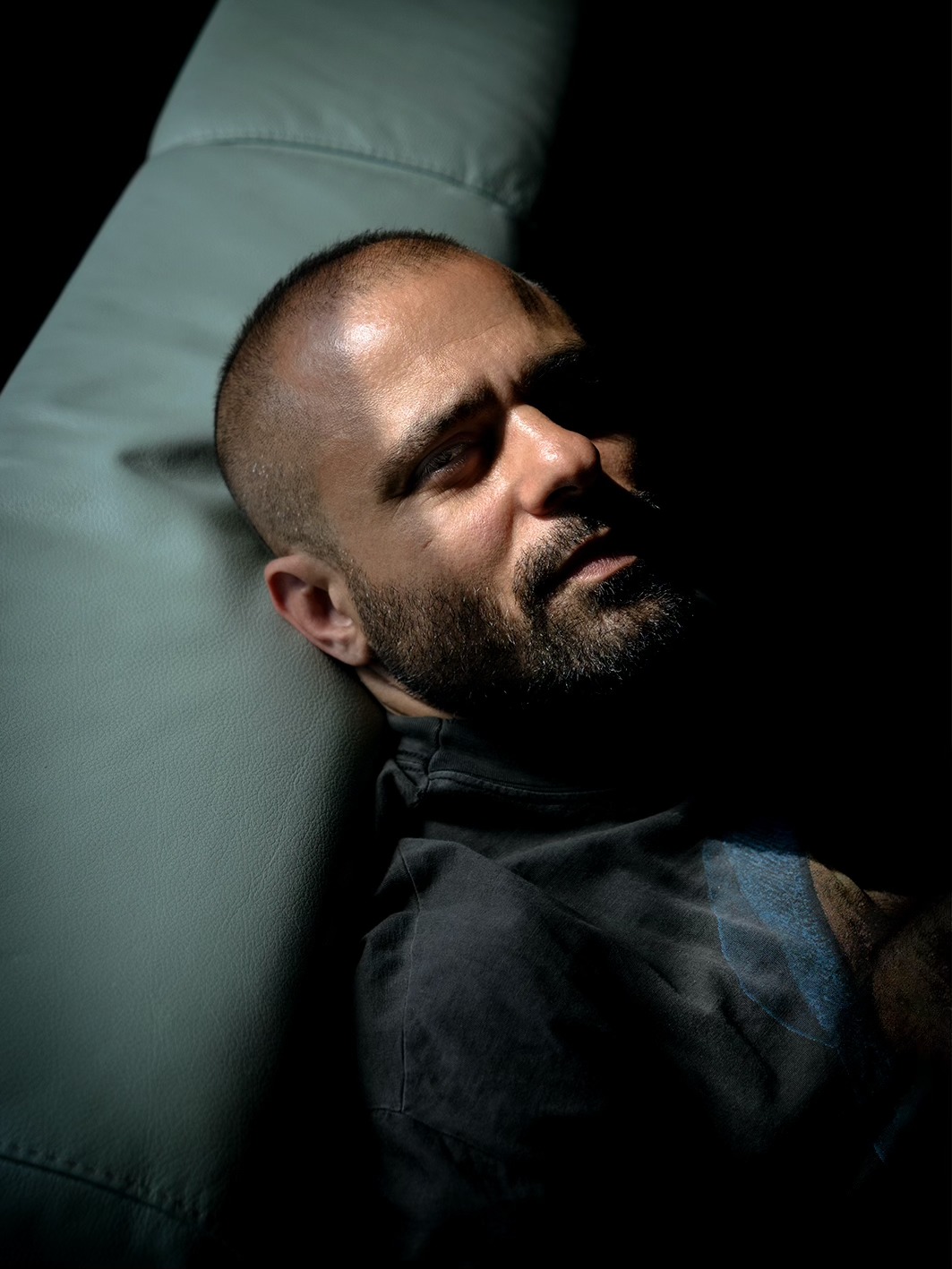
Features #27 - January 2024
Mamali Shafahi
NICOLAS VAMVOUKLIS IN CONVERSATION WITH MAMALI SHAFAHI
Your latest exhibition, “Phantasmagoria: Daddy Kills More People,” at The Breeder in Athens, delved into the interplay of reality and imagination. How do you see contemporary society navigating these blurred boundaries, and what motivated you to explore this theme?
Well, more and more, I believe “reality,” as a solid term, doesn’t exist. I’m also not interested anymore in any definition of reality. I guess that explains my practice as an artist. I’m constantly trying to escape this one-liner description of reality; it’s dry, boring, and hard to deal with. That’s how imagination embraces my world – I’m welcoming any imagination coming through my thoughts and developing it. That’s my trick to escape. That’s why getting attached to mythology and creating my own abstract narrative is a way of getting out of this trap. I’m very open to receiving and digesting any type of imaginary ideas of this reality.
The “Daddy Sperm” project, initiated in 2012, has been a significant part of your artistic journey. Can you elaborate on how your exploration of ‘the miracle of life’ and generational connections informs the featured works?
In the “Daddy Sperm” project, my starting point was how a drop of liquid becomes a human being, and as humans, we can make all these magical creations and discoveries, such as art and science… One of the most magical ones is that my dad became an artist through that project, and now, after more than ten years, this journey has taken so many different paths, from my dad’s inspiration by Persian culture to phantasmagoria, which is more related to my own complex life experience.
Your signature “Heirloom Velvet” sculpture series integrates your father’s drawings, reflecting an intimate familial collaboration. I enjoyed the mesmerizing effect created by the flocked epoxy pieces in the gallery. Can you share more about their impressive textures?
When I started the relief series during the pandemic, my idea was merely to do something handmade and childish to forget the catastrophe of the first few months after COVID-19 began. I decided to use my dad’s drawings as the basis of this series, as I couldn’t do a new body of work. The whole idea was to create something in order to forget the drama of that time.
I chose flocking for various reasons. The most important one was the sensual aspect of velvet. I believe flock, which is velvet pigment, has a very mystical look. I also like the fact that these works look soft and fluffy, but they are solid and rough underneath.
The installation was developed upon one of your characteristic fluorescent grids. What significance does the grid element hold for you, and how does it contribute to the immersive experience for visitors?
Grids are related to the idea of a trap, to a network that brings all the elements of the show together. It’s my way of appropriating any space I’m exhibiting in. These grids are fluorescent, and they become activated by UV light. This effect floats us into the void; most artworks become silhouettes and flat. Grids take all the audience’s attention, flowing us even more deeply into this trap. I’m interested in how light and sound affect our perception in general.
Mamali, you mentioned earlier that your practice provides a getaway to the realms of fantasy while paying tribute to the Iranian heritage. How do you balance these two aspects?
Iran stands in a very interesting geographic position, where the West meets the East. As an Iranian immigrant artist, I think my role is to bring this spice to Western culture and give a new meaning to that fantasy. There are so many examples of Iranian mythology and poetry I grew up with as a child that are involved in creating the world of phantasmagoria, such as Kalīla wa-Dimna.
In the context of global power structures, how do you perceive the role of your art in addressing or commenting on political dynamics?
We obviously live in a world that needs to be restructured, and as everyone can feel, it’s happening quite fast, and there are many uncertainties about the future. My work invites the audience to think about these changes. I’m constantly rethinking and recreating new possibilities, and always careful about my tone.
Is there any upcoming project you would like to share with me?
I’m working on a few projects at the moment. I’m finishing my second feature movie, preparing a proposal for the next edition of Unlimited at Art Basel, and working on the costumes for a club performance event in Utrecht in March called “Freaky Dancing.”
PHOTO CREDITS
Installation view: Mamali Shafahi, Phantasmagoria: Daddy Kills More People, The Breeder, Athens, 2023. Copyright the artist
Courtesy The Breeder
Photo: Thanassis Gatos
Installation view: Mamali Shafahi, Phantasmagoria: Daddy Kills More People, The Breeder, Athens, 2023. Copyright the artist
Courtesy The Breeder
Photo: Thanassis Gatos
Mamali Shafahi Phantasmagoria 2022 Car paint and flocking on epoxy 134 x 90 x 20 cm
Copyright the artist
Courtesy The Breeder
Mamali Shafahi Phantasmagoria 2023 Flocking on epoxy 102 x 82 x 23 cm
Copyright the artist
Courtesy The Breeder
Mamali Shafahi
Phantasmagoria 2022 Car paint and flocking on epoxy 142 x 55 x 37 cm
Copyright the artist
Courtesy The Breeder
Installation view: Mamali Shafahi, Phantasmagoria: Daddy Kills More People, The Breeder, Athens, 2023.
Copyright the artist
Courtesy The Breeder
Photo: Thanassis Gatos
Installation view: Mamali Shafahi, Phantasmagoria: Daddy Kills More People, The Breeder, Athens, 2023.
Copyright the artist
Courtesy The Breeder
Photo: Thanassis Gatos
Mamali Shafahi Phantasmagoria 2023 Car paint and flocking on epoxy 240 x 180 x 40 cm
Copyright the artist
Courtesy The Breeder






















